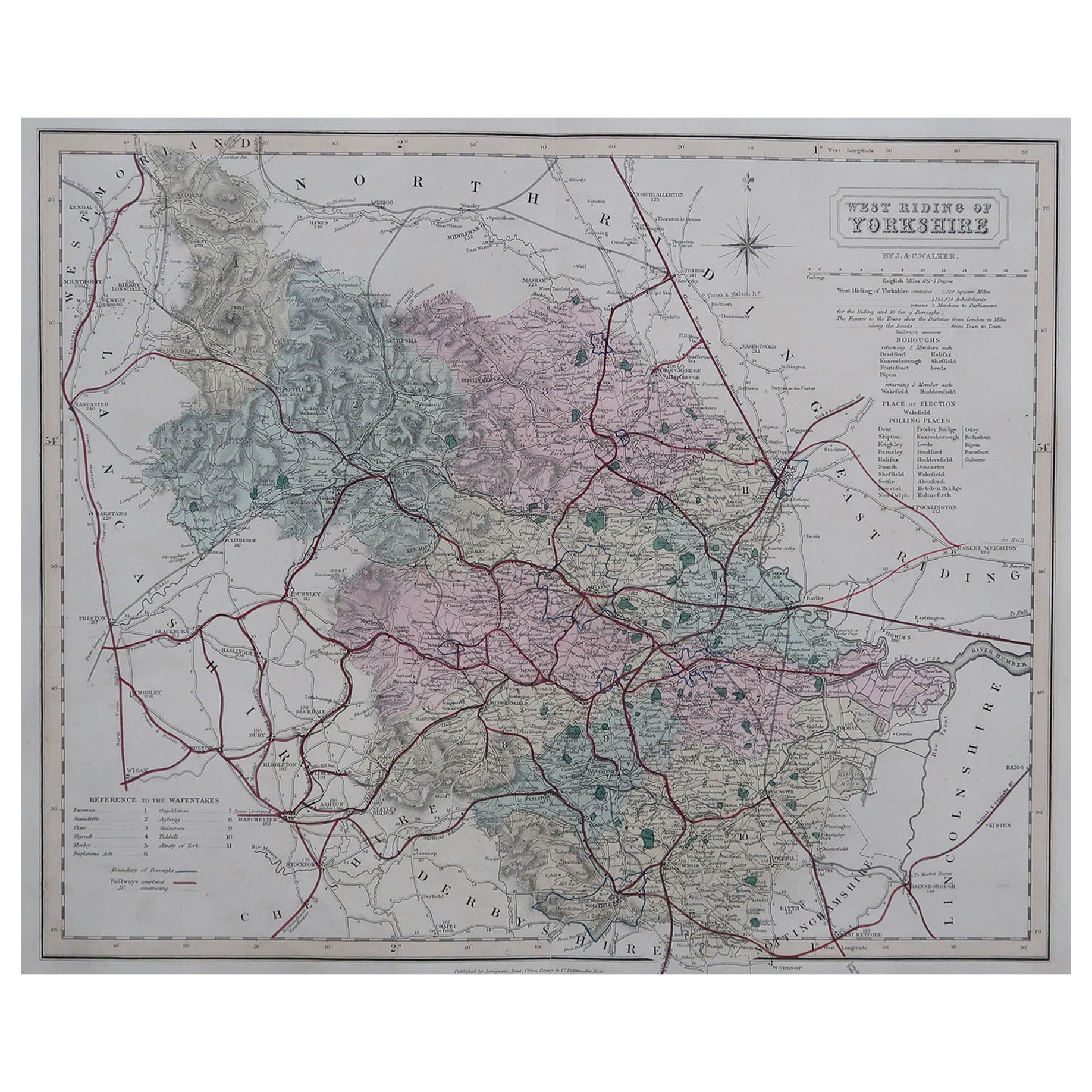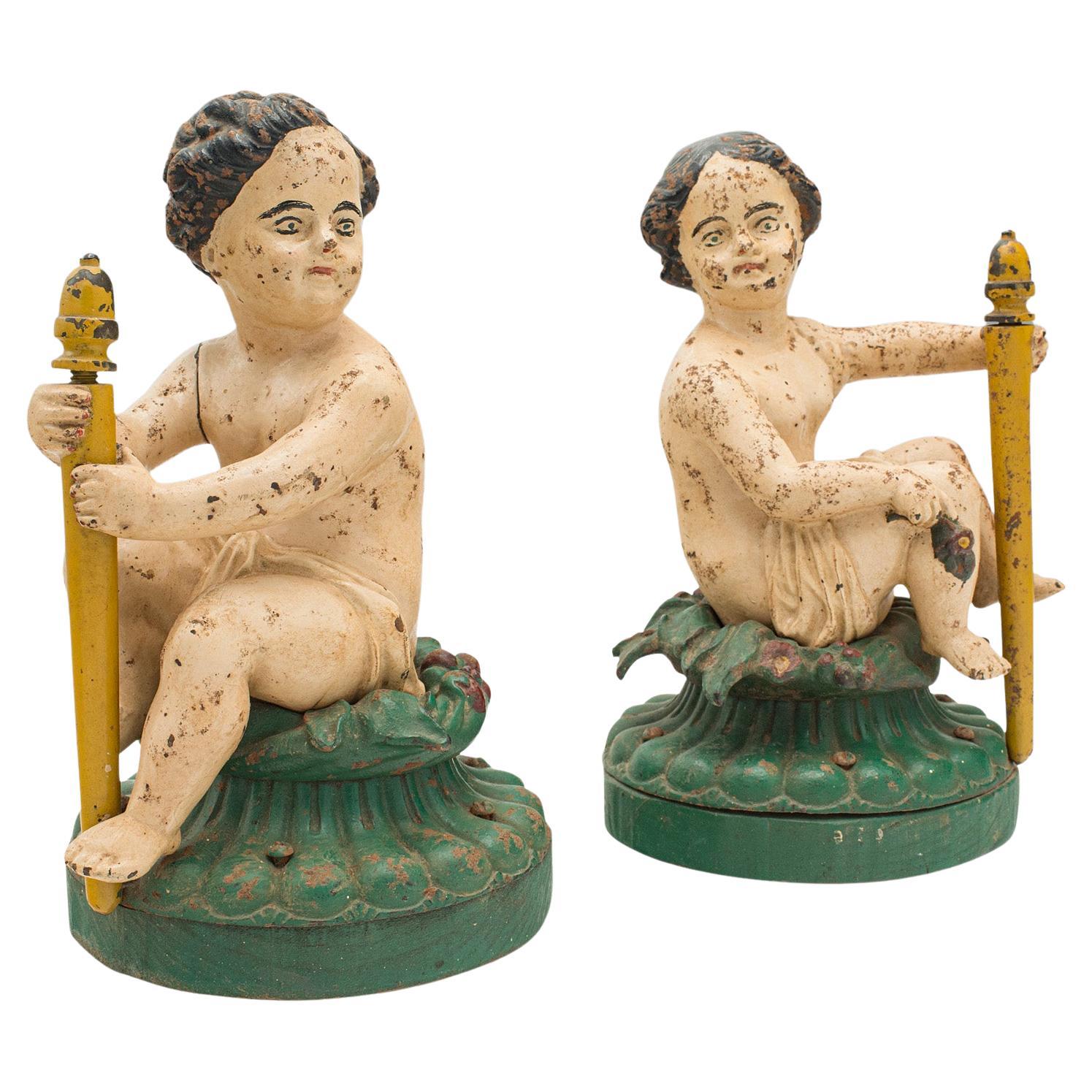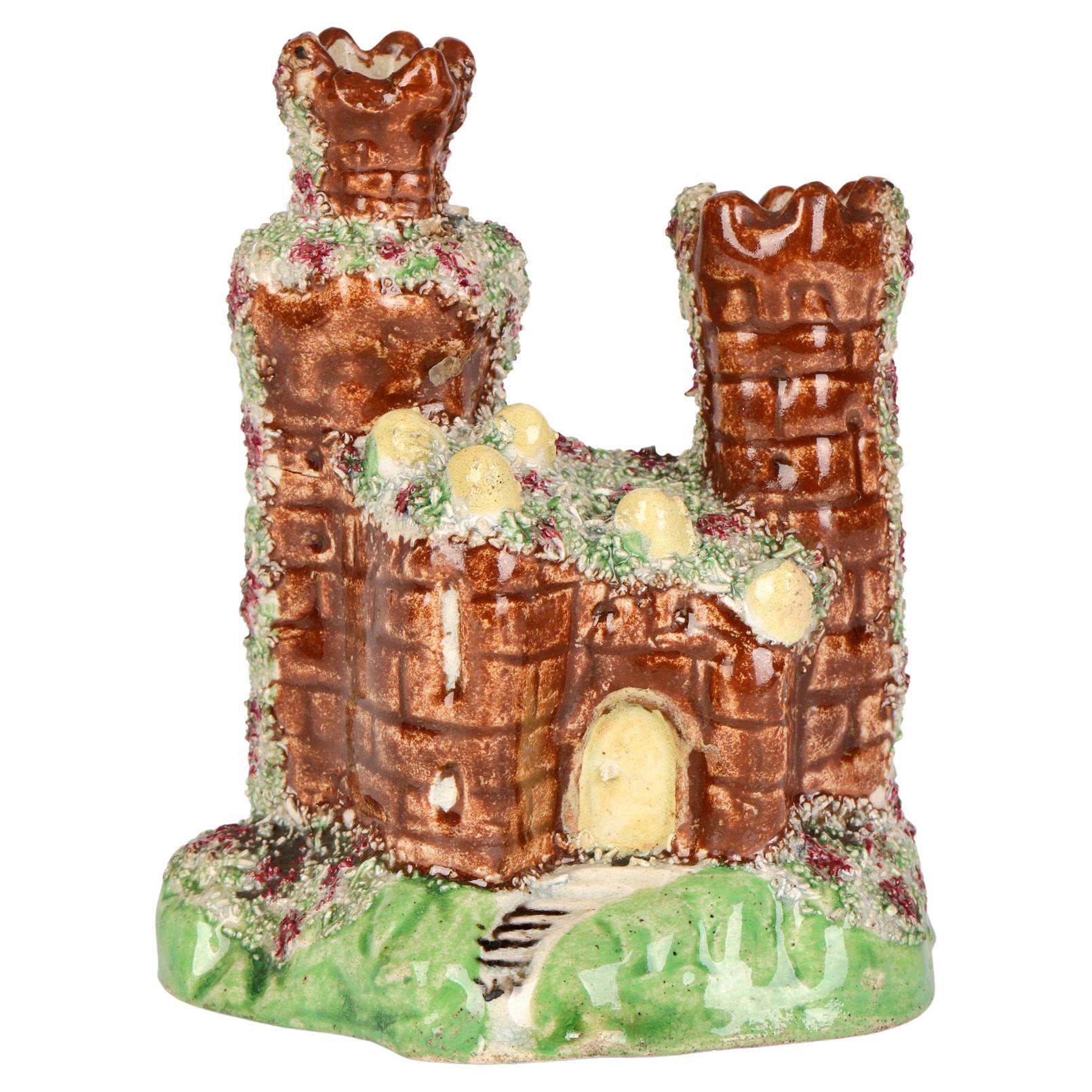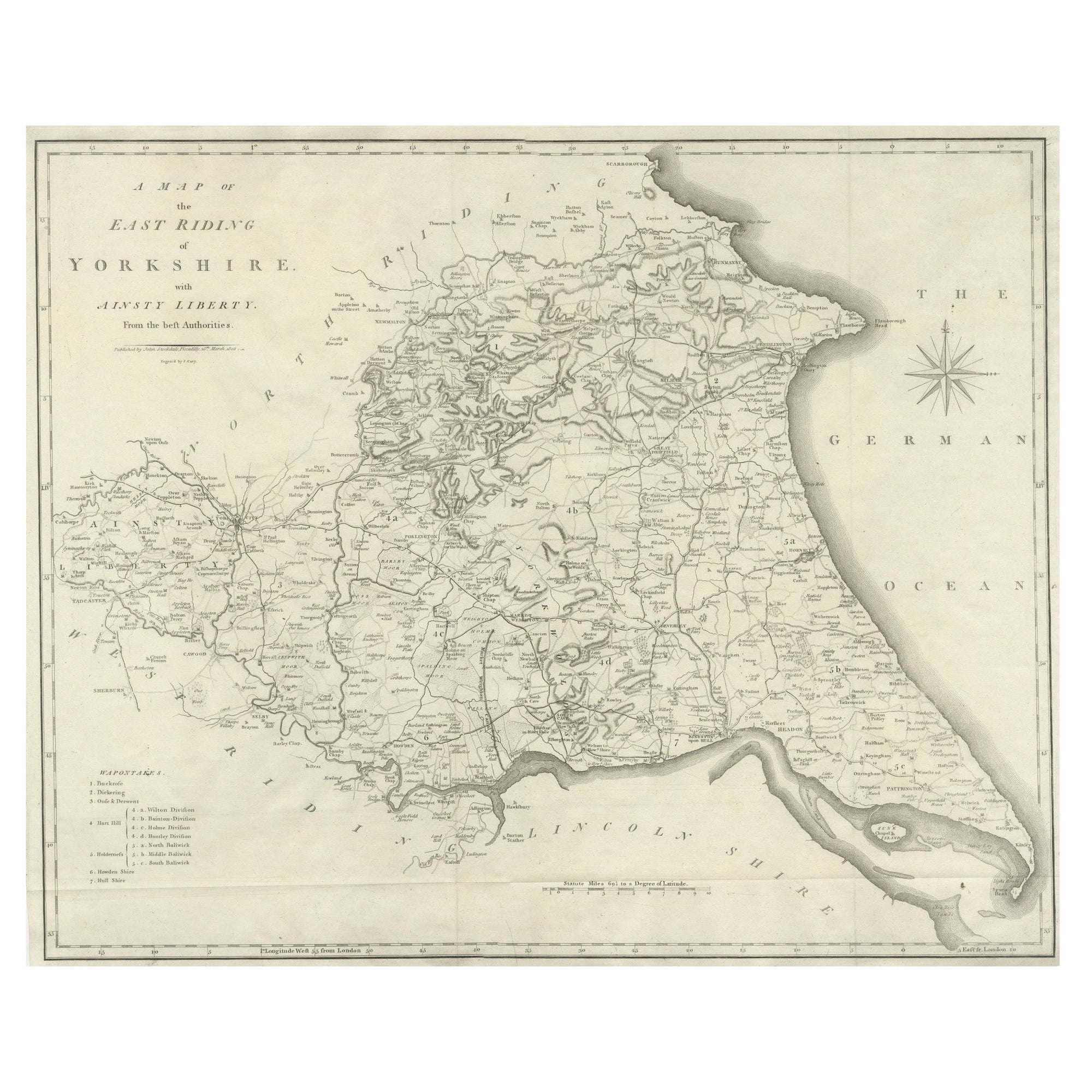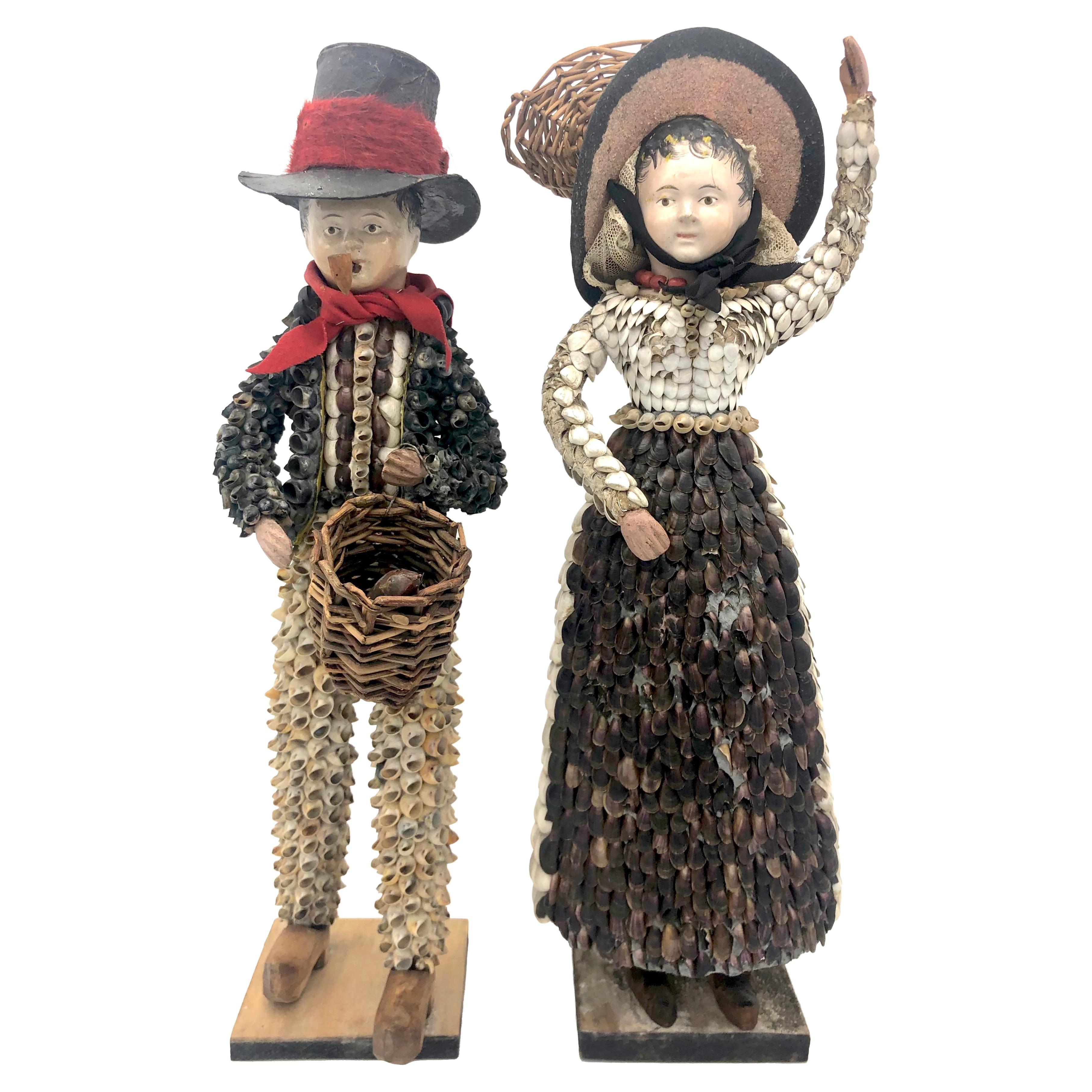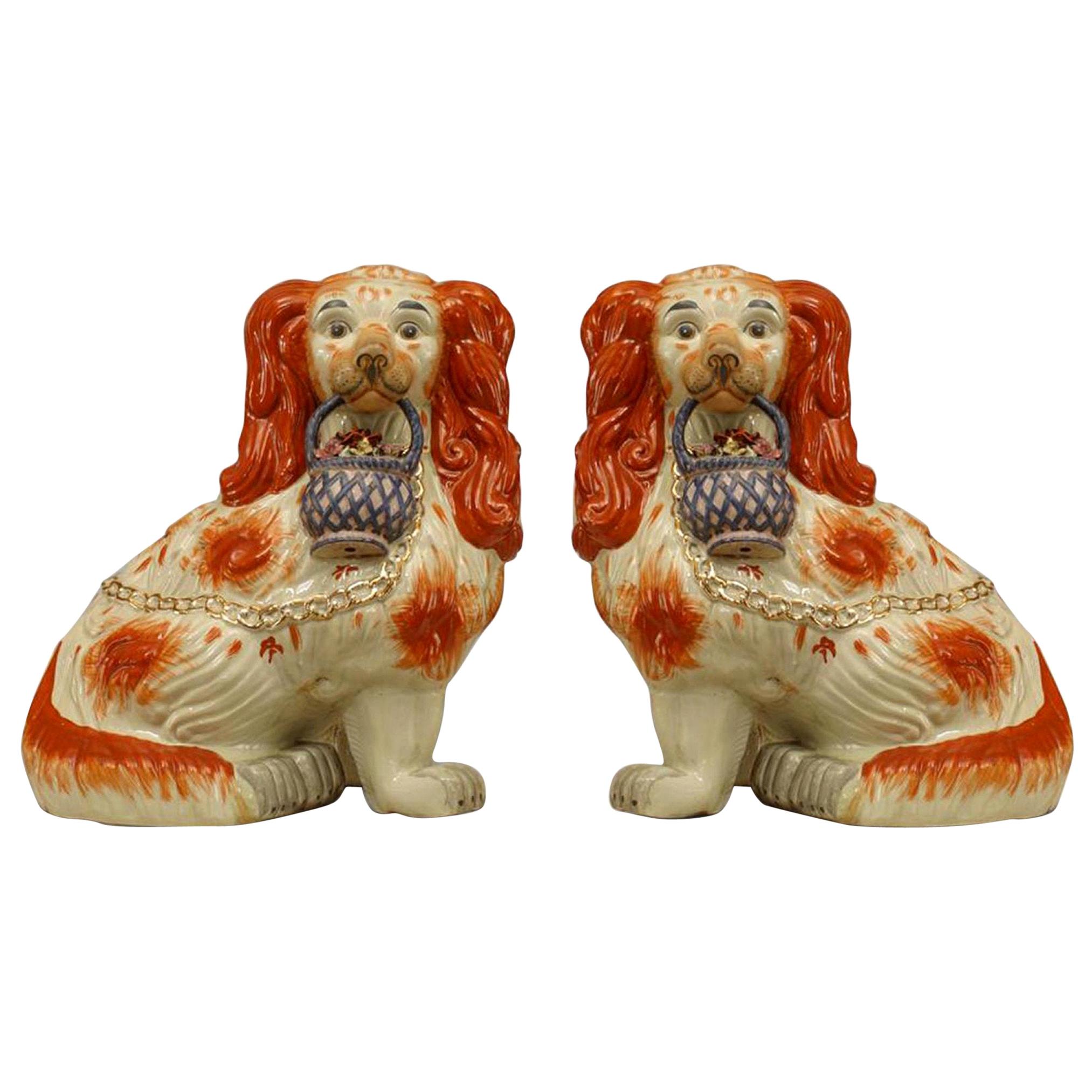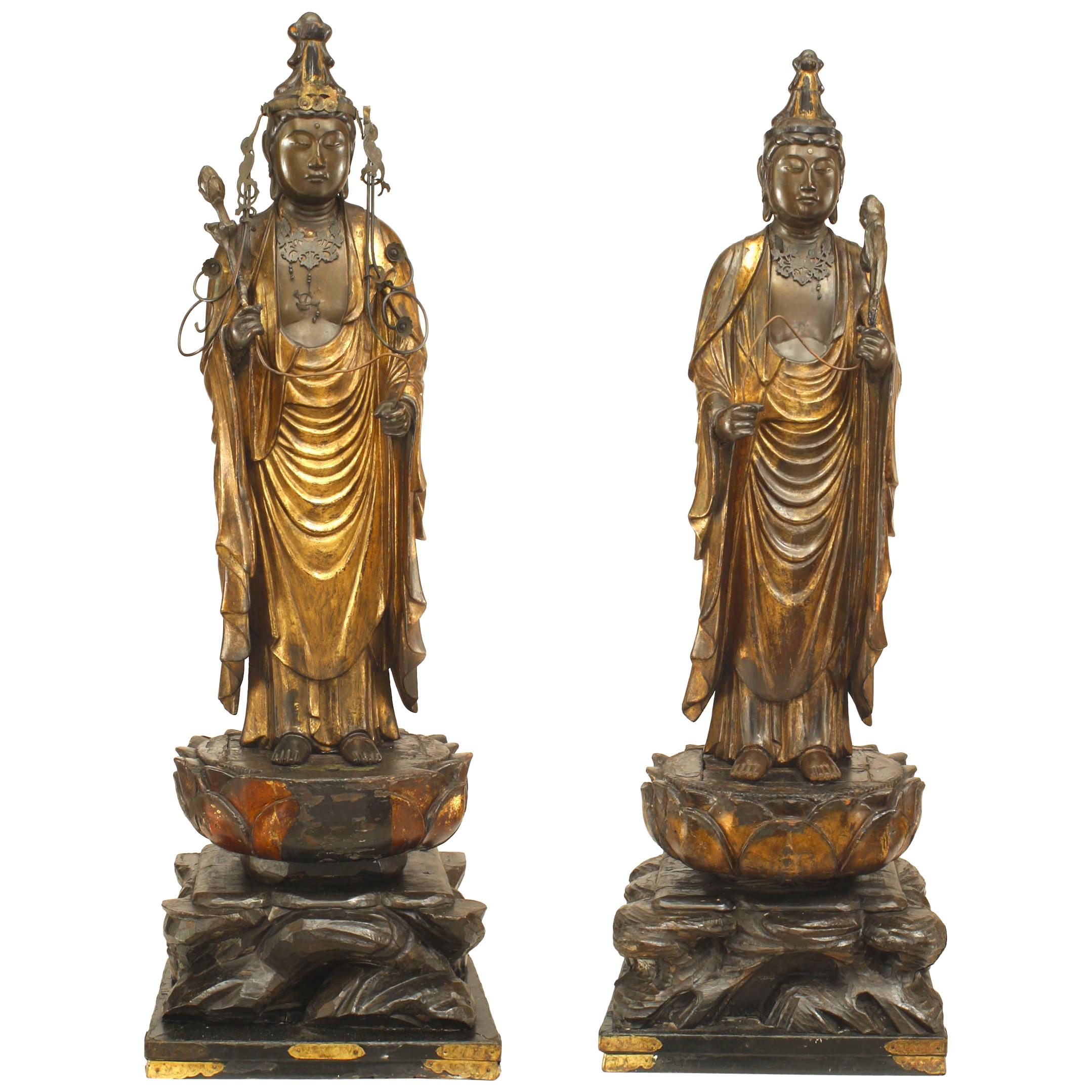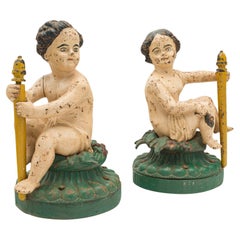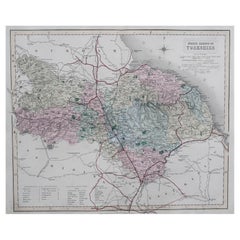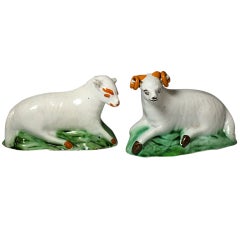
Antique English Pottery Pair of Figures Ram and Ewe, Yorkshire Pottery
View Similar Items
1 of 3
Antique English Pottery Pair of Figures Ram and Ewe, Yorkshire Pottery
About the Item
- Dimensions:Height: 4 in (10.16 cm)
- Sold As:Set of 2
- Place of Origin:
- Period:
- Date of Manufacture:circa 1800-1810
- Condition:Tiny chip on horn restored.
- Seller Location:Woodstock, GB
- Reference Number:Seller: 0818 1stDibs: LU9581834063
You May Also Like
- Pair Of Antique Decorative Figures, English, Cast Iron, Rubenesque, VictorianLocated in Hele, Devon, GBThis is a pair of antique decorative figures. An English, painted cast iron putto on elm base, dating to the Victorian period, circa 1870. Delightfully unusual figures with Rubenesq...Category
Antique Late 19th Century British Victorian Models and Miniatures
MaterialsIron
- Original Antique English County Map, North Yorkshire, J & C Walker, 1851Located in St Annes, LancashireGreat map of North Yorkshire Original colour By J & C Walker Published by Longman, Rees, Orme, Brown & Co. 1851 Unframed.Category
Antique 1850s English Other Maps
MaterialsPaper
- Original Antique English County Map - West Yorkshire. J & C Walker. 1851Located in St Annes, LancashireGreat map of The West Riding of Yorkshire Original colour By J & C Walker Published by Longman, Rees, Orme, Brown & Co. 1851 Unframed.Category
Antique 1850s English Other Maps
MaterialsPaper
- Art Deco Two English Pottery Glass Eyed Dog FiguresLocated in Bishop's Stortford, HertfordshireTwo delightful English Art Deco pottery novelty dog figures with glass eyes made by Fielding’s and Crown Devon and dating from the 1930’s. The small figures portray two small puppy d...Category
Vintage 1930s English Art Deco Ceramics
MaterialsCeramic
- English Antique Pearlware Pottery Castle Spill HolderLocated in Bishop's Stortford, HertfordshireAn unusual and rare antique English pearlware pottery model of a castle spill holder dating from the early 19th century. The castle stands on a shaped mou...Category
Antique Early 19th Century English George III Pottery
MaterialsPottery
- Pair of Antique English Naval CannonLocated in Lymington, HampshirePair of antique English naval cannon each with a tapering three stage barrel flanked by plain trunnions, with a knob shaped cascabel button before a shaped rectangular raised vent and ending in a 3 1/2” bore muzzle, enclosing a removable conforming wood plug, circa 1800. Stood upon a naval type bronze-mounted four wheeled wooden carriage, including its wedge shaped quoin with knob handle. The Earls of Lonsdale, Lowther Castle, Cumbria, presumably by descent to Hugh Cecil Lowther, 5th Earl of Lonsdale (1857-1944), until sold by his heir and brother, Lancelot, 6th Earl, as part of the contents of Lowther Castle, Maple & Co. Ltd./Thomas Wyatt, Tuesday 14 April 1947 and two following days, lot 558: ‘A pair of Old Gun Metal Cannons on teakwood carriages, 3ft. 6in. long’. Mrs. P.M. Adie-Shepherd, sold Christie’s, London, 29 May 1970, lot 96. Lowther Castle is a castellated mansion built by Robert Smirke between 1806 and 1814 for William Lowther, 1st Earl of Lonsdale (1757-1844). It was constructed on the foundations of the former 17th century family seat, Lowther Hall, but it was only in the early 19th century that it was afforded the name ‘castle’ in keeping with the Europe-wide fashion for romanticism and which was promoted by influential characters such as William Beckford at Fonthill Abbey, Wiltshire in England and by the writer Sir Walter Scott at Abbotsford, Roxburghshire, Scotland. While it’s not known when these naval cannon were acquired for Lowther they would have been entirely fitting in the castle or its approaches and it’s likely that they were in place soon after the castle was completed, or perhaps acquired later by the 5th Earl. A tantalising possibility is that the cannon were originally aboard the East Indiaman Lowther Castle which was active in the early 19th century. HUGH CECIL LONSDALE, 5TH EARL OF LONSDALE (1857-1944) AND THE DEMISE OF LOWTHER CASTLE In 1882 at the age of 25 Hugh Lonsdale (1857-1944) unexpectedly inherited the earldom and with it the extensive Lonsdale estate, including tens of thousands of acres of Cumberland and Westmorland and coalfields at Whitehaven. However, despite his spectacular inherited wealth – he was suddenly one of the wealthiest men in England, over the course of his lifetime he managed to decimate the family fortune. He led a full and colourful life, one of adventure and luxury. An early intrepid escapade took place in July 1888 when, as part of an expedition called the Scotch Naturalist Society, he set embarked on horse sleigh...Category
Antique Early 1800s English Arms, Armor and Weapons
MaterialsBronze
$169,099 / set
